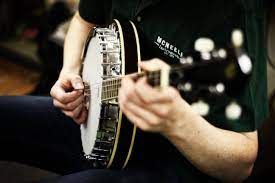
ULTIMATE GUIDE TO BANJO TUNING FOR BEGINNERS

You just went down to your local music store and a Banjo caught your eye. The attendant there played some sick tunes on it and you fell more in love with the instrument. You take it home, play around with it a bit but eventually, you will start to notice that its sound is starting to, well, sound off. Don’t worry, that happens with all stringed instruments including the Banjo. All you need to do is tune your banjo again and it will sound as good as new. If you do not know how to tune your banjo, do not fret as this is the “Ultimate Guide to Banjo Tuning For Beginners”
Now, there are multiple methods that you can go about tuning your banjo. The most common and easy method is to use banjo tuners but I suggest you learn all the other methods too, because you should be capable of tuning your banjo under varied circumstances. Depending on technology is fine to an extent, not forever and for everything. Another important thing to note here is that I will be teaching you guys how to tune a five-string banjo, the most common type. There are many variations of Banjo ranging from a 6 string to a 12 string. With that said, if you can tune a five-string, you can tune a twelve-string as well because the procedure and technique stay the same. Let us begin:
STANDARD TUNING: G-D-B-D-G
#Method 1 – Using An Electronic Tuner
Using an electronic tuner is the simplest way to go about it, the ultimate hack for beginners. I still use a tuner because of how convenient it really is. There are several types of tuners out there. They have gotten cheaper and more accurate with time. There is no single “best kind” of tuner out there, it really just boils down to personal preference as all of them achieve the same results: a tuned-up banjo. I recommended using tuners with a clip so they can attach themselves to the headstock of your banjo. You can also just download a tuner app, that is what I use.
Here is how to use a tuner:
- Let us take the 5th string for this example
- 5th string is the G string
- Play that string and see what note the tuner shows
- The tuner will show whether the note is sharper/flat, in simple terms, whether you need to tune up or down
- Twist the tuning knobs in the direction necessary and keep twist and hitting the string till you reach the right note/pitch
#Method 2 – Tuning Relative To Other Strings
This method requires a bit of practice both in terms of playing capabilities and ear training. So, I suggest you first familiarise yourself with the Banjo and its basics then try this. You should absolutely learn this method of tuning because you won’t always have a banjo and this looks much cooler as well if I am being frank.
So, here is how you tune your banjo’s strings relative to other strings. For this, you do need 1 string to be in tune, so keep a tuner nearby just in case. You can bypass this limitation if you have trained ears but whilst learning, do keep a tuner in handy. Here is what you must do:
- Make sure that the 4th string, the D, is in tune.
- The fifth note of the D string will be the G note, the same as the 5th string.
- You can use the G, fifth fret, on the 4th string to tune to the 5th string. Match their pitch.
- Tune the rest of the strings the same way. Tune the strings relative to the string you just tuned.
You do require knowledge of notation and some ear training but this method isn’t as tough to master as it may seem.
#Method 3 – Tuning With Them Ears
Tuning with your ears is the toughest method. Do not be intimidated by it though, aspire to it. Some people are naturally gifted with sharp, pitch-perfect ears while some of us have to train our ears to that level. If you have played other instruments, you are already near the goal! Here is what you need to do
- You need to play a string and twist the knobs till you feel it is in pitch, till it is the correct note.
- Tune multiple strings this way, incorporate the “tuning relative to other strings” method to ease things a bit.
- Play chords, or simply an open G, so you can test all of the strings together and make sure none of them sound off.
Conclusion
In the above article, the topic of which was “Ultimate guide to Banjo Tuning For Beginners”, I listed three steps using which you can tune your banjo. Tuning can get annoying but it is a part of playing a string instrument. Hope it helped!
